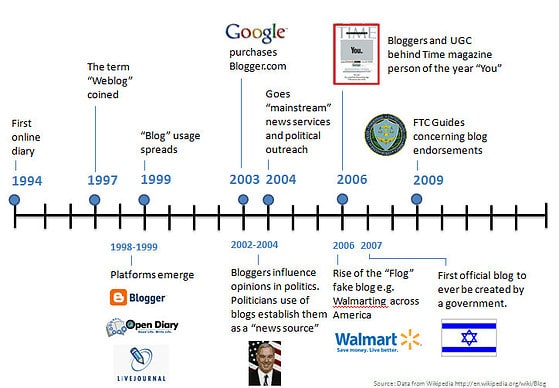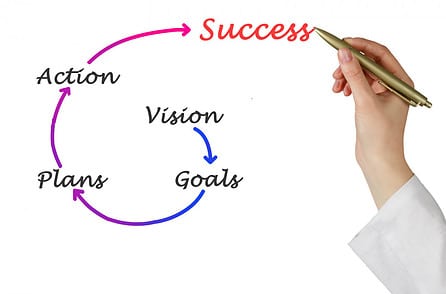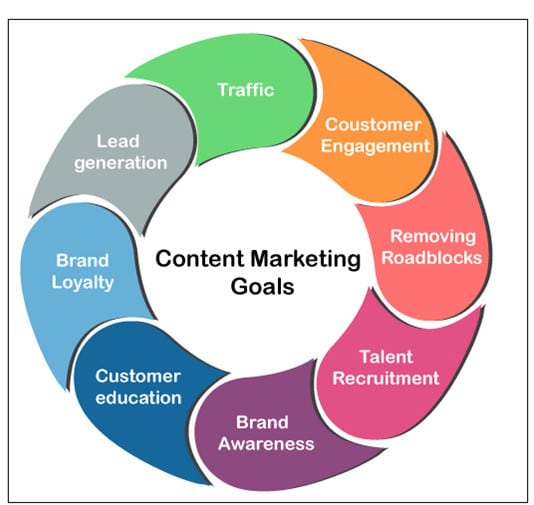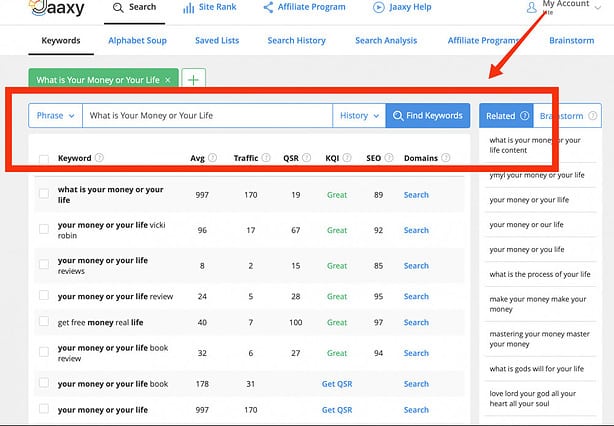There are many reasons why people starts a blog. While some just intends to document personal thoughts and experiences, others view a blog as a creative platform and connect with others. There’s also another category that get into blogging as a digital marketing channel, build a brand and earn some income.
Whatever your reasons of starting a blog, you must produce content. Blog content assembly line must be professionally structured and organized to be effective, a synonym for blog ontent strategy.
Lets first evaluate the origin and the journey of blogging to appreciate the importance of blog content strategy.
History of Blogging
The history of blogging date back to early 1990s. In the early stages, blogs were simply a record of personal experieces – a personal diary to share thoughts, ideas, stories, opinions etc.
The realization that you can create a huge audiences of loyal fans from around the world and monetize this fanbase changed the entire landscape. Blogging metamorphised into big business.
What is a Content Strategy?
A blog content strategy is a comprehensive plan that outlines how a blog will create, publish, manage, and distribute content to achieve specific goals.
 It is therefore a fundamental component of content marketing and encompasses the planning, creation, delivery, and governance of content across various platforms and channels.
It is therefore a fundamental component of content marketing and encompasses the planning, creation, delivery, and governance of content across various platforms and channels.
It aims to ensure that content serves its intended purpose effectively and aligns with the broader goals of the content creator.
Content Strategy vs. Content Tactics
Sometimes there’s confusion between content strategy and content tactics. Content strategy and content tactics are two essential components of content marketing, and they work together to create a cohesive and effective content marketing plan.
Content tactics are the specific actions and techniques used to execute your content strategy. These are the day-to-day activities such as copywriting or editing, making videos, designing infographics, and posting social media promotions.
A content strategy is the overarching framework that guides your content tactics.
Why Do you Need a Blog Content Strategy?
Lets look at the current blog statistics.
 According to Web Tribunal, there are more than 600 million blogs out of 1.9 billion websites, posting over 6 million blog posts daily. All these blogs are competing fiercely for the attention of the Internet browsers at any given time.
According to Web Tribunal, there are more than 600 million blogs out of 1.9 billion websites, posting over 6 million blog posts daily. All these blogs are competing fiercely for the attention of the Internet browsers at any given time.
Sadly however, only about 10% of this blogs generate some income.
In addition, search engines must crawl through these massive sea of content to figure out what’s worth showing to the browsers.
Can you really compete in such a space successfuly without a sound plan?
A common mistake by blog owners is assuming that blogging is a very easy thing to do. The simple fact that a blog is largely informal makes many bloggers think they can run a successful blog without a plan or strategy. This is way too far from reality!
In the absense of blog content strategy, you cannot gain the attention of search engines leave alone your target audience. Your blog content may never appear in the search engines result pages (SERPs). You hardly stand a chance to make money from your blog.
How to Develop a Content Strategy
A well-defined content strategy provides a roadmap for creating and managing content that not only resonates with your target audience but also contributes to achieving your broader business or personal objectives. It ensures that your content efforts are strategic, consistent, and aligned with your audience’s needs and preferences.
A good blog content strategy is essential for ensuring that your blog consistently provides value to your audience and helps you achieve your goals.
Below are the steps to take in developing a blog content strategy:
Define Your Goals
The core of good content strategy is having a purpose for every piece of content. It is therefore imperlative that you start by clarifying your blog’s objectives. What do you want to achieve with your blog?
According to JavatPoint, commmon goals of content marketing are:
- Brand loyalty
- Customer education
- Brand awareness
- Talent recruitment
- Removing roadblocks
- Customer engagement
- Traffic
- Lead generation
Remember your goals should always be SMART (Specific, Measurable, Achievable, Relevant & Time-bound)
Identify Your Target Audience
Identifying your target audience is a crucial step in developing a content strategy. It allows you to create content that is more relevant, engaging, and effective. You are then in a position to create content that is more likely to resonate with and engage your intended audience. This, in turn, can lead to more effective content marketing and a stronger connection with your audience.
Follow these steps to find your target audience
- Market research:
- Define your offering:
- Demographics and sychographics – age, gender, location, education, maritall status, occupation, lifestyle, values, beliefs, hobbies.
- Behavior and needs – needs, challenges, pain pointsDevelop Customer personas
- Develop customer Personas (combination of the four above)
Using the customer personas, you can tailor your marketing and content strategies to address the unique characteristics and needs of different segments of your target audience.
Competitor Analysis
Competitor analysis helps you understand your competitive landscape and tailor your content marketing efforts to gain a competitive edge. The following are the tasks are critical when conducting a thorough competitive analysis;

Competitors’ Content
- Identify your direct and indirect competitors
- Analyze competitors’ content thoroughly
- Identify content gaps and opportunities
- Unique Selling Proposition (USP) – Understand the USP of your competitors. What makes their content stand out, and how can you differentiate your content to appeal to your target audience?
Analyse Competitors’ Content for Keywords and SEO
- Examine how your competitors’ content is received by their audience. Check their social media engagement, comments, shares, and likes. This can provide insights into what resonates with your shared audience.
- Analyze the keywords your competitors are targeting in their content. Tools like Jaaxy or Ahrefs can help you identify the keywords they rank for. This can inform your own SEO strategy.
- Look at the performance of your competitors’ content in terms of metrics like traffic, conversion rates, and backlinks. This information can reveal what content is driving results for them.
Promotion and Ethics
- Determine which distribution channels your competitors are using to promote their content. Are they active on specific social media platforms or using email marketing? Assess their reach and engagement on these channels.
- Analyze the frequency of content production by your competitors. Are they posting daily, weekly, or monthly? This can help you determine how often you need to produce content to remain competitive.
- Ensure that you respect copyright laws and ethical standards when conducting competitor analysis. While it’s important to learn from your competitors, avoid directly copying their content.
After conducting a comprehensive competitor analysis, you can use the insights gathered to refine your content strategy. Tailor your content to address the identified gaps, provide value to your audience, and differentiate your brand.
This competitive intelligence can help you create more effective and relevant content that resonates with your target audience and ultimately drives better results in your content marketing efforts.
Keyword Research
With over 500 million new keywords searched every day in Google alone, the role keyword research cannot be gainsaid. This reality of the keyword market demands the use of keyword tool that can “dig” as deep as you want.
Use keyword research tools like Jaaxy, Google Keyword Planner, SEMrush, or Ahrefs Keywords Explorer to find relevant keywords related to your industry. Identify high-volume, low-competition keywords to target in your blog posts.
Jaaxy Keyword Research Tool for example, will guide you to gain insights in the following important aspects of a keyword (highlighted);
- Avg – Average nummber of searches the keyword receive er month
- Traffic – Visits your website will receive if you rank in age 1 of SERs
- QSR (Quoted Search Results) – The number of competing websites for the keyword. This is imortant for cometition analysis above)
- KQI (Keyword Quality Indicator) – This is the indactor of the cometitiveness of a keyword. Green is great, Red is poor
- SEO – A score based on combination of competition and traffic. The higher the better
- Domains – Availability of domains related to the keyword
- Related – Keywords related to your target keyword
- Brainstorm – A list of kkeywords to hel brainstorm.
Jaaxy will save you hours per week on your research activities, giving you more time to work on other aspects of your business
Content Creation and Workflow (Content Assembly Line)
Content creation and workflow refer to the process of planning, producing, and distributing content in a systematic and efficient manner. An organized content creation workflow is essential for content marketing, whether you’re creating blog posts, videos, social media content, or any other type of content. Besides the obvious step of planning, you will need to undertake the following tasks;
- Content pillars and topics – develop a list of core topics or content pillars that align with your business and audience interests. These should be broad themes that you can create multiple blog posts around. For each pillar, brainstorm specific blog post ideas.
- Decision on the types of content – This could include articles, how-to guides, listicles, infographics, videos, podcasts, or case studies. Diversifying your content can keep your audience engaged.
- Establish a content creation workflow – research, writing, editing, graphics creation, and promotion.
Content Calendar

A content calendar, also known as an editorial calendar, is a tool that helps you plan, organize, and schedule your content creation and publication efforts over a specified period, typically weeks or months. Content calendars are essential for bloggers or anyone responsible for managing content production.
Content calendars often include space for keyword research and SEO optimization. This allows you to align your content creation with your SEO strategy, ensuring that you target relevant keywords and phrases in your posts.
Another important highlight of a content calendar is that it outlines when and what you’ll publish. For example, you must take into account factors like seasonality, holidays, and industry events. This is key particularly for promotion efforts.
In conclusion, content calendar is a valuable resource for streamlining your content creation process, maintaining consistency, and aligning your content strategy with your broader marketing goals. It helps you stay organized, save time, and produce high-quality content that resonates with your audience.
Quantity vs Quality
The focus should be on creating high-quality, informative, and engaging content that is consistently delivering value to your audience rather than churning out posts.
Finally, you should alwys have it in mind that a successful blog content strategy is an ongoing process that requires monitoring, adaptation, and a commitment to providing solutions to your audience. Stay up to date with industry trends and continuously refine your approach to achieve your blogging goals.
SEO Optimization
Search Engine Optimization (SEO) optimization is a crucial aspect of blog content creation. Effective SEO can help your content rank higher in search engine results, making it more discoverable to your target audience.
- Keyword Research
- High Quality COntent
- Internal and External Links
- Content Structure – meta description, meta titles and descriptions, schema markups
- Mobile Optimizatyion
- Image Optimization
This SEO Checklist Article will help you to understand and implement SEO Optimization
You can get started with these keyword research tools:
- Google Ads Keyword Planner (free)
- Jaaxy (free starter version)
- Keywords Everywhere browser extension ($10 for 100,000 credits)
- AnswerThePublic (free)
- Ahrefs Keywords Explorer ($99/month)

Content promotion and distribution
Content promotion and distribution are critical aspects of a successful content marketing strategy. Creating high-quality content is just one part of the equation; ensuring that your content reaches and engages your target audience is equally important.
There are several content promotion platforms such as social media, email marketing, influencer outreach, content syndication, online communities, guest blogging and many more.
Sender is one such tooll for email marketing. Sender’s free plan allows up to 15,000 emails per month to 2,500 subscribers. It includes features like email automation, templates, and reporting.

It is important to remember that not all promotion and distribution channels will be equally effective for every piece of content. It’s essential to adapt your strategy based on the type of content, your target audience and your goals.
Performance Tracking and Analytics
Tracking content performance is crucial to assess the effectiveness of your content marketing efforts, identify what’s working, and make data-driven decisions to improve your strategy.
KPIs (Key Performance Indicators)
For a start, you will be required to define KPIs (Key Performance Indicators), the specific metrics that align with your content marketing goals. Common KPIs include:
- Website Traffic – Measure the number of visitors, pageviews, and unique visitors to your content.
- Engagement Metrics – Monitor metrics like time on page, bounce rate, and scroll depth to gauge user engagement.
- Conversion Rates – Track the number of leads, sign-ups, or sales generated by your content.
- Social Shares and Engagement – Count the likes, shares, comments, and click-through rates on social media platforms.
- Email Metrics – If you use email marketing, monitor open rates, click-through rates, and conversion rates from email campaigns.
- SEO Metrics – Evaluate keyword rankings, organic search traffic, and backlinks.
Analytics Tools
The application of analytics tools to gather data on your content’s performance then come in handy. Google Analytics is a widely used tool for website traffic analysis. Additionally, you can use social media analytics platforms, email marketing software, and SEO tools like Google Search Console or SEMrush to track specific metrics.

Important Note: Tracking content performance is not just about gathering data; it’s about using that data to refine your strategy and create content that resonates with your audience and meets your business objectives.
You will be required to regularly review your content strategy and adapt it based on performance data and evolving industry trends. From such reviews, you can then continuously optimize your content to provide more value to your audience.
Summary
A blog content strategy plays a pivotal role in shaping the direction, growth, and effectiveness of your blog. It provides a roadmap for creating content that resonates with your audience, achieves your goals, and ultimately helps your blog thrive in the online space.
An effective blog content strategy is hinged on 3 pillars:
- Your target audience and their problems
- Your product and the solutions to the problems
- Your content as the bridge between the Solutions and the problems
With the roadmap outlined in this article, you can begin the road to connecting with your customers effectively. If you focus on your content, the content calendar, keyword research/SEO optimization and finally utilizing the feedback from analytics tools, your success is guaranteed
Jeff
Safari Affiliate

